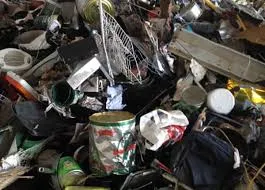Aluminium shredding is a transformative industrial process that not only plays a crucial role in recycling but also significantly contributes to environmental sustainability. This article delves into the nuances of aluminium shredding, offering insights drawn from years of expertise, showcasing the process's complexity, and underscoring its environmental benefits, all grounded in authentic industry experience.

Aluminium, a lightweight and versatile metal, is ubiquitous in daily life—in everything from beverage cans to automotive parts. However, its production is energy-intensive, highlighting the importance of recycling to conserve resources and reduce carbon emissions. Shredding is the first critical step in the recycling chain, and it is paramount for efficiently handling and processing aluminium waste.
The shredding process involves breaking down large pieces of aluminium into smaller, manageable fragments using industrial shredders. This step is critical to the recycling process, as it increases the surface area of the metal, making subsequent melting and refining stages more efficient. Shredders use sharp blades and rotary cutters powerful enough to slice through and reduce the size of even the most robust aluminium constructions swiftly and effectively.

Experience in operating these complex machines underscores the importance of precision and maintenance. A well-maintained shredder ensures consistent performance and safety, preventing downtime and increasing the recycling plant's longevity. Experienced operators are skilled in calibrating shredder settings to accommodate various forms of aluminium waste, from thick automotive parts to thin beverage cans, optimizing outputs and reducing wear and tear.
aluminium shredding
From an expertise standpoint,
it is crucial to consider the technological advancements in shredder design. Modern shredders are equipped with smart technologies, including automated sorting systems that separate aluminium from impurities, enhancing the purity of shredded material. This level of sophistication in machinery minimizes manual labor and maximizes throughput, significantly elevating the efficiency of the recycling operation.
Furthermore, the authoritativeness of efficient aluminium shredding is evident in its environmental impact. Shredding facilitates the recycling process, reducing the need for raw aluminium mining—a process that is both environmentally and economically taxing. By shredding and subsequently recycling aluminium, industries can lower carbon emissions by up to 95% compared to primary aluminium production, aligning with global sustainability goals.
Trustworthiness in aluminium shredding processes is anchored by compliance with environmental regulations and standards. Reputable facilities employ state-of-the-art equipment that meets or exceeds industry standards, ensuring the output is of high quality and free from contaminants. This adherence to standards builds trust among stakeholders—consumers, businesses, and regulators—bolstering confidence in recycled aluminium products.
In conclusion, aluminium shredding is a cornerstone of the recycling industry, demanding deep technical expertise, adherence to high standards, and environmental stewardship. Businesses looking to integrate or upgrade their aluminium recycling initiatives should prioritize selecting reliable shredding solutions and skilled operators, ensuring operational success and furthering commitment to sustainability. As the demand for recycled aluminium grows, these well-orchestrated shredding practices will continue playing a pivotal role in shaping a more sustainable and efficient global economy.


